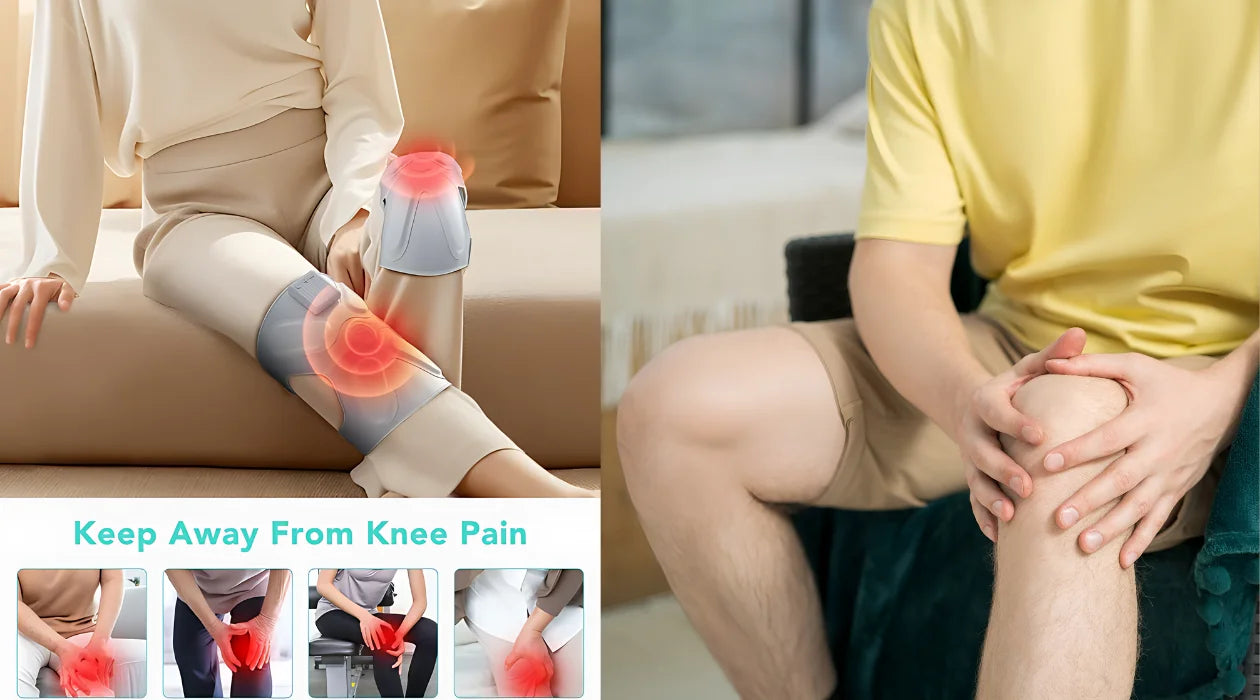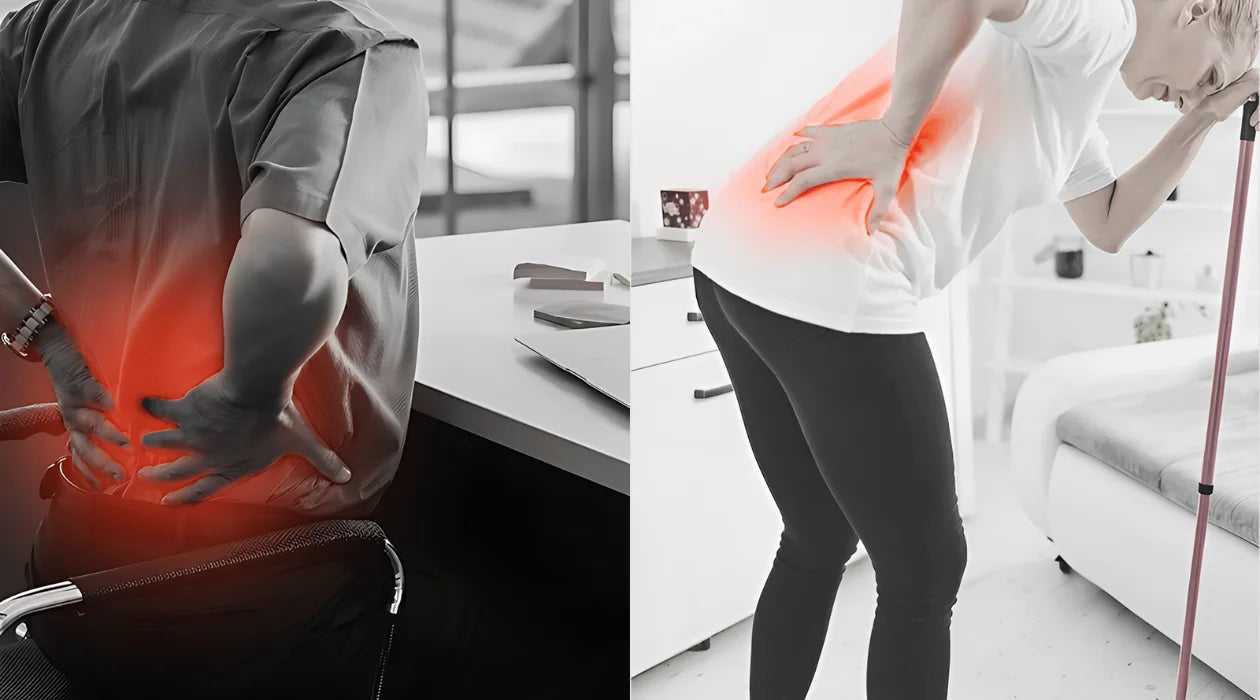Have you tried massage therapy? Perhaps you've used a massage to soothe sore muscles and it felt great. But did you know that massage has benefits beyond just relieving tension? In this article, we'll look at 10 benefits of massage therapy.
What is Massage

Massage is a method of healing that applies pressure to soft tissues such as muscles, connective tissue, ligaments, and joints. The main purpose is to improve blood circulation, relieve muscle tension, reduce pain, promote lymphatic drainage, and boost the immune system.
There are many types of massage to suit a variety of needs and situations. Common types include Swedish massage, shiatsu, deep tissue massage, sports massage, and Thai massage.
Benefits of Massage
Let’s take a look at some of the key benefits of massage therapy.
1. Manage Anxiety and Depression
During massage, the body's parasympathetic nervous system is activated, which reduces levels of the stress-related hormone cortisol and increases levels of dopamine in the body. These neurotransmitters can regulate mood, reduce anxiety, and make you feel happier.
2. Relieve Pain
Many people experience back and neck pain due to poor posture, heavy lifting or sitting for long periods, and sleeping in an incorrect position.
Massage therapy stimulates the production of endorphins (the body's natural painkillers) and is therefore very effective in relieving a wide range of pain. These endorphins provide immediate pain relief and promote a sense of well-being.
3. Improve Sleep
Massage increases the production of serotonin, a neurotransmitter that helps regulate sleep. This can lead to deeper, more restful sleep. It’s particularly effective for people who suffer from frequent insomnia or disrupted sleep.
4. Boost Immunity
Massage stimulates the lymphatic system, helping the body eliminate toxins and improving immune function. Enhancing lymph flow, increases the rate at which pathogens and waste are removed, allowing for faster recovery time.
5. Improve Athletic Performance
Massage therapy can break down scar tissue and adhesions that can restrict movement and cause pain. By reducing cortisol levels and promoting relaxation, massage can also help athletes stay focused and calm under pressure. Regular massage can improve athletic performance, shorten recovery time, and reduce the risk of injury, making it an important part of an athlete's training regimen.
6. Improve Blood Circulation
Massage techniques stimulate blood flow, ensuring more oxygen and nutrients are delivered to your muscles and organs. It also removes metabolic waste from your muscles and tissues. Enhanced blood flow also prevents blood clots and reduces swelling, which can promote healing and improve cardiovascular health.
7. Relieve Tension Headaches
Massage can effectively relieve tension headaches. It relaxes tense muscles in the neck, shoulders, and head, soothes the nervous system, and reduces the excitability of nerves that cause headaches.
Techniques such as trigger point therapy and myofascial release are particularly effective in treating tension headaches. Regular massage can significantly reduce the frequency and intensity of headaches.
8. Relieve Muscle Tension and Stiffness
Massage uses pressure and kneading to relax muscles, break up adhesions (knots) and release tension. Massage can reduce back stiffness and pain, and increase range of motion and flexibility. This can be especially helpful for people who experience muscle tension from prolonged sitting or repetitive motions.
If you need a massage to relax muscle stress, SKG massagers are the way to go. The SKG brand has thousands of patents, is recommended by hundreds of media, is loved by millions of satisfied users, and is even endorsed by Maye Musk.
9. Relieve Joint and Arthritis Pain
If you have arthritis, your joints may be swollen and painful. When a massage therapist kneads and massages the muscles around your joints, it increases blood flow to the joints, delivering essential nutrients and oxygen to the affected area, helping to reduce inflammation and promote healing.
Before a massage treatment, be sure to inform your massage therapist of your arthritis condition so that they can adjust their techniques to better suit your needs.
10. Lowers Blood Pressure
Massage therapy can lower blood pressure by promoting relaxation and improving blood circulation. Reducing adrenaline hormones puts the body into a state of relaxation, which helps lower blood pressure.
In addition, massage stimulates blood flow, which helps dilate blood vessels and improves blood circulation. Improved blood circulation helps the heart pump blood more efficiently, which further helps lower blood pressure.
Which Parts of The Body Should Be Massaged?

Massage therapy can target various areas of the body, each with unique benefits. Here are some key areas to consider:
- Neck and shoulders: These areas are often tense from poor posture, stress, and long hours sitting at a desk. You can use a neck and shoulder massager to relieve tension headaches ease muscle tension and improve flexibility.
- Back: The back supports the spine, and stiffness and pain can occur, especially in the lower back. Massaging the back can release tension and improve circulation, relieve chronic pain, improve posture, and increase overall mobility.
- Arms and hands: Repetitive motions and prolonged computer use can lead to tension and conditions like carpal tunnel syndrome. Applying pressure to specific acupuncture points and using stretching techniques can relieve tension and improve blood flow.
- Legs and feet: The legs and feet are under a lot of stress from standing, walking, and physical activity. Massaging these areas can relieve soreness and stiffness, improve circulation, and relieve conditions like plantar fasciitis.
- Head and face: Stress and tension can lead to headaches and tight facial muscles. Massage can stimulate blood flow and release tension in facial muscles. Relieve headaches, reduce stress, and promote relaxation.
- Abdomen: The abdomen can relieve tension from stress and indigestion. Massaging the abdomen can stimulate the digestive organs and promote relaxation, reducing bloating and improving digestion.
- Chest: Tightness in the chest can affect breathing and posture. Massaging the chest can improve respiratory function and relieve muscle tension.
When is Massage Prohibited?
To ensure safety and health, massage should be avoided in certain cases:
- Fever: If you have a high fever, massage may make your condition worse.
- Infection: If you have an infection or any infectious disease.
- Severe skin problems: If you have skin problems such as rashes or inflammation.
- Venous bleeding: You are at risk of venous bleeding.
- Heart problems: If you have a heart disease such as ischemia.
Before massage, always consult your doctor about any health problems to ensure that massage is safe for you.
FAQ
What is The Most Effective Type of Massage?
Deep tissue massage uses more pressure than Swedish massage, making it an excellent choice for people with chronic muscle problems such as soreness, injury, or imbalance. This type of massage helps relieve muscle tension, chronic muscle pain, and anxiety by targeting deeper layers of muscle and connective tissue. It’s particularly beneficial for those who experience persistent muscle issues and need more intensive treatment.
How Often Should You Get a Massage?
For general maintenance and health, the average person should aim to get a massage once a month or every other month. However, if you are dealing with specific issues such as chronic pain or severe muscle tension, it can be beneficial to start with more frequent treatments. Receiving a massage at least once a week for a few weeks can help address these issues more effectively before transitioning to a less frequent schedule.
Why Do I Need to Drink Water After a Massage?
Drinking water after a massage helps to flush out toxins released during the massage. Massage stimulates the lymphatic system and increases circulation, which releases metabolic waste products from the muscles. Staying hydrated ensures that these toxins are flushed out of the body efficiently, helping to prevent soreness and aiding recovery.
Summary
Massage is a therapeutic method that promotes healing, relieves pain, improves circulation, and reduces stress. By exploring different types of massage, you can find the one that best suits your needs and enjoy the relaxation that massage can bring.




